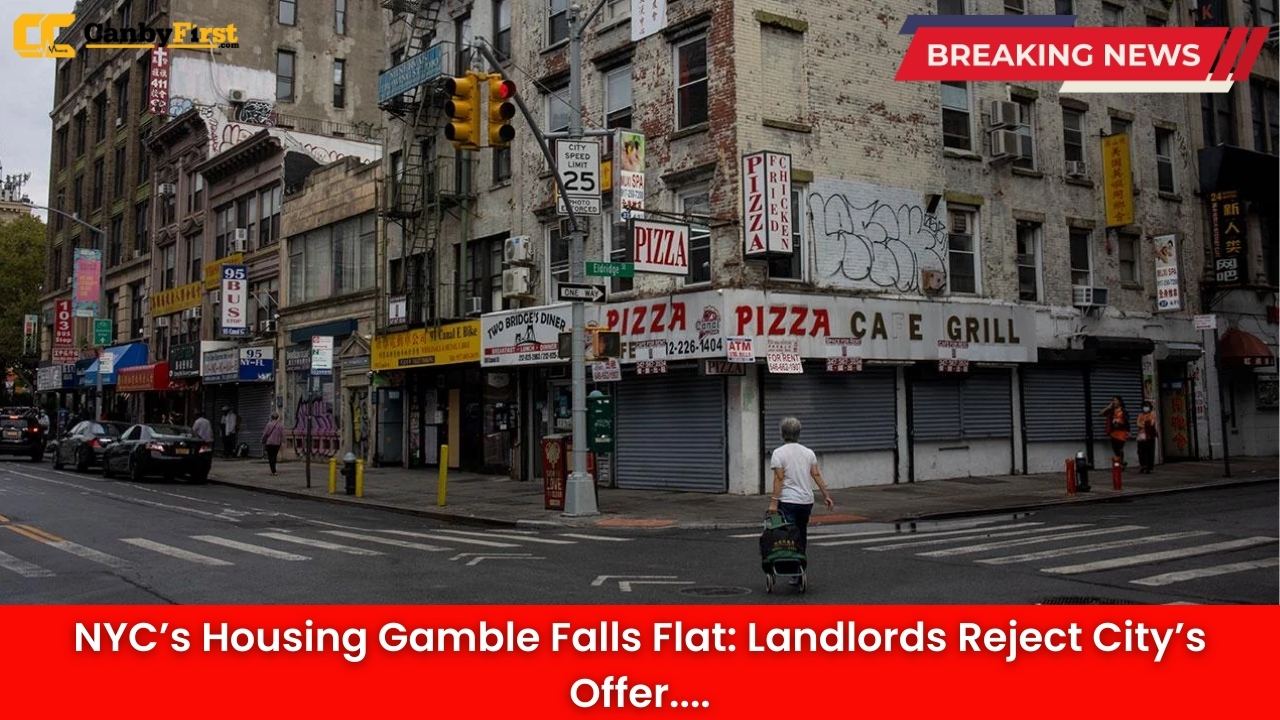New York, US: A new city initiative aimed at easing New York’s housing crisis by paying landlords to repair and reopen vacant apartments has failed to gain traction, with not a single property owner taking the deal.
An Offer on the Table
Earlier this year, city officials rolled out a program designed to tackle two issues at once: the soaring number of New Yorkers in need of affordable housing and the thousands of rent-stabilized apartments sitting empty across all five boroughs. The plan offered landlords financial incentives, including covering renovation costs and guaranteeing rent payments through city vouchers.
The idea seemed simple—help landlords bring units up to code, fill them with tenants quickly, and expand housing access. But months later, the program is stalled. Despite the promise of public funding, not a single landlord has signed on.
Also Read
Why Landlords Aren’t Biting
Property owners argue that the proposal is far less generous than it looks on paper. Many claim the estimated repair subsidies don’t cover the full cost of renovation, particularly for older rent-stabilized apartments that often require extensive upgrades. Some landlords also remain wary of potential delays in city reimbursement and the strict regulations that come with renting to tenants through housing programs.
Beyond finances, industry representatives say landlords fear locking into long-term city contracts that cap rent increases, making them reluctant to invest heavily in units that might never be profitable again. “There’s no real incentive if the numbers just don’t add up,” one landlord association spokesperson explained in response to the city’s outreach.
A Mounting Housing Crisis
Meanwhile, the need for housing solutions continues to climb. The number of New Yorkers relying on shelters and housing vouchers has reached historic levels, and advocates insist that every vacant apartment represents a missed opportunity. City records show thousands of rent-stabilized units across Manhattan, Brooklyn, Queens, and the Bronx remain unoccupied—many needing only moderate upgrades before they could house families.
For tenants, the program’s failure to spark activity is another frustrating chapter in an ongoing affordability crisis. Housing advocates argue that without stronger enforcement and better financial structures, incentives alone may not be enough to unlock housing.
City Hall Responds
Officials at City Hall insist the program is still in its early stages and hope adjustments could draw landlord participation. They point to similar incentive efforts in other cities that eventually gained traction after initial hesitancy. However, critics say that with the urgency of the crisis, New York cannot afford to wait.
Some council members have suggested revising the program to increase subsidies, reduce bureaucratic hurdles, or even consider legislation that compels landlords to bring certain apartments back on the market. Others have floated higher penalties for those who deliberately warehouse units despite widespread demand.
What’s Next?
The city finds itself at a crossroads: it has invested resources in a program meant to create more affordable housing, yet faces resistance from the very property owners it depends on. For now, the apartments remain empty, the funding sits untouched, and thousands of New Yorkers are left searching for homes.
With no takers so far, the initiative underscores the deep divide between policymakers eager to close the housing gap and landlords cautious of the financial risks. The coming months may determine whether New York adjusts its strategy—or doubles down on a plan still awaiting its first success.












